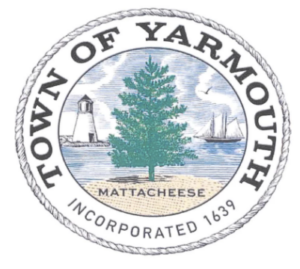Open the door, walk outside. What’s the first living thing – besides plants or other humans – that you see?
Unless you’re living underwater, the answer is most likely a bird – and in the spring, it’s liable to be plural.
Millions more of them are arriving from their South and Central American wintering grounds, in a giant yearly migration stemming across the eastern seaboard.
Many of those will nest and breed here on Cape Cod, taking advantage of the variety of habitats the Cape is known for.
Each of these warm weather visitors has a distinct personality and beauty – not to mention a song that you probably associate with spring and don’t even realize it.
Following are a few species which make spring on Cape Cod so familiar and beautiful.
Yellow Rumped Warbler
Warblers are the songstresses of the animal kingdom. This particular species flies up from as far south as Panama – although, it is the only warbler on Cape Cod which can digest waxy berries, allowing it to arrive earlier and stay later.
According to the bird-tracking website ebird.com, you’re likely to spot these songsters at the Four Ponds Conservation area in Bourne, the Mashpee National Wildlife Refuge, Barnstable’s Long Pasture Wildlife Sanctuary and the Marconi Station site in Eastham. Look for a mostly grey and white, sparrow-sized bird with yellow patches near the upper wing and on the rear. You’ll know them by their sweet-sounding calls.
Gray Catbird
Catbirds are one of the species responsible for the constant squall of sound you’ll hear on a warm spring day. They are extremely common on Cape Cod and in the Northeast in general, so you won’t have to look very far to find one. Catbird behavior is, well, pretty catty. They’ll hop around from tree limb to limb, staring and scolding at you if you get too close (it is their tree, after all).
When not making its equally-catty “mew” call, you’ll hear these relatives of the mockingbird imitating a host of other birds, sometimes chattering on for up to 10 minutes. Look for the gray, approximately robin-sized body with a dark grey or black “hat” on top of the head and a dusky red under-tail.
Red-winged Blackbird
The Cape’s countless ponds and marshes are precisely the right breeding grounds for this well-known summer resident. With a striking appearance that looks exactly like what its name describes, the Red-winged Blackbird is a bold and loud bird noted for an emblematic, conkla-reee song which is a staple of American nature sounds. It’s the type of song you hear and exclaim, “so THAT’S what makes that sound!”
Many Red-wings stay on Cape Cod in the winter, but they’re most active and spunky in the spring and summer months, like most breeding creatures. Look, and listen, for them pretty much anywhere where there is some fresh water, marsh or bogs.




























Speak Your Mind